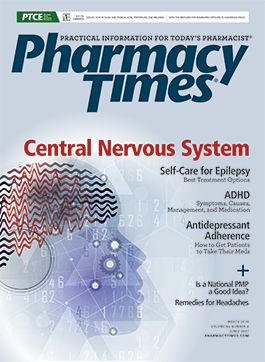Collaborative Care for Diabetes Can Be Rewarding for Health Professionals, Patients
A team-based approach to diabetes patient care can help improve outcomes, according to a Pharmacy Times® Peer Exchange that addressed this subject recently.
A team-based approach to diabetes patient care can help improve outcomes, according to a Pharmacy Times® Peer Exchange that addressed this subject recently.
The partnership between health care professionals can influence everything from management decisions for patients with diabetes to adherence issues, according to the panel, which discussed a range of topics from confounding factors affecting diabetes care, to outcomes measures, to value-based diabetes care.
According to panel member Tripp Logan, PharmD, adherence isn’t only about how often a prescription is filled and how many days it covers. Dr. Logan noted that “adherence of the care plan” is the goal, and that means understanding each patient’s unique barriers and how they can overcome them.
Logan used mental health as an example. A patient with diabetes who also has a diagnosis of schizophrenia or bipolar disorder often will use medications that tend to increase blood sugars and resistance to insulin.
“You have to find a balance and have a different goal for this patient,” Logan said. “Sometimes, you have to talk with the psychiatrist. Sometimes you talk with the patient. And sometimes, it’s health beliefs that are based on their mental illness that you have to negotiate with.”
Dhiren Patel, PharmD, MBA, PhD, said that he sees improving nonadherence, particularly as it relates to injectables, as a 2-pronged approach. First, the patient should receive an explanation about what the medication is and how it works. “You actually explain it and discuss how it’s an endogenous hormone that is there,” he said. Patel’s second method is having the patient do the first injection at a clinic.
Sometimes, experts said, patient outcomes have little to do with medications or clinical care. Depression or financial struggles could be at the root of a health care challenge, necessitating another type of service provider.
Steven Peskin, MD, MBA, recalled the case of a patient with diabetes who needed social services. Although the man’s blood pressure (128/73 mm Hg) and hemoglobin A1C (7.2%) indicated he was ‘fine,’ Peskin observed that he had a below-the-knee amputation, was essentially blind, and was close to needing dialysis.
“All of our interventions to control the disease had been inadequate,” Peskin said. “We have failed this person. Social services were all that we had to meaningfully offer that patient.”
Richard Wynn, MD, discussed financial struggles as a barrier to treatment. Some patients are simply unable to afford a prescription. “They’re embarrassed to say it, so patients do without,” said Wynn.
Other patients are relying on food pantries for sustenance or purchase cheap groceries to stay within a budget. They may also reside in a food desert, which means limited access to fresh ingredients and produce. Meanwhile, many accessible inexpensive foods, such as rice, have an impact on diabetes outcomes.
“Nutrition is an area where we’re not doing a great job,” said Peskin. “There is ample information to show that we can significantly change the trajectory of diabetes with good nutritional support.”
Wynn said patients without secure housing also have unique obstacles in maintaining their health. “Insulin is not really an option for those people,” Wynn said. “So, we’ve had to use more oral medications, even for the type 1 diabetics, to manage hyperglycemia because of their circumstances.”
Overall, the experts stressed needed communication between health care professionals and with patients. According to Logan, health care professionals have a shared ownership of each patient, and pharmacists and providers do have the same goals. “Sometimes there’s a disconnect. We get this stamp, a lot of times, of being a dispensary. It’s sometimes hard to get over that hump,” said Logan. “And once you do, it’s very rewarding for both sides.”
To learn more about this topic, visit the Peer Exchange section on our Pharmacy Times® website, Pharmacytimes.com.

